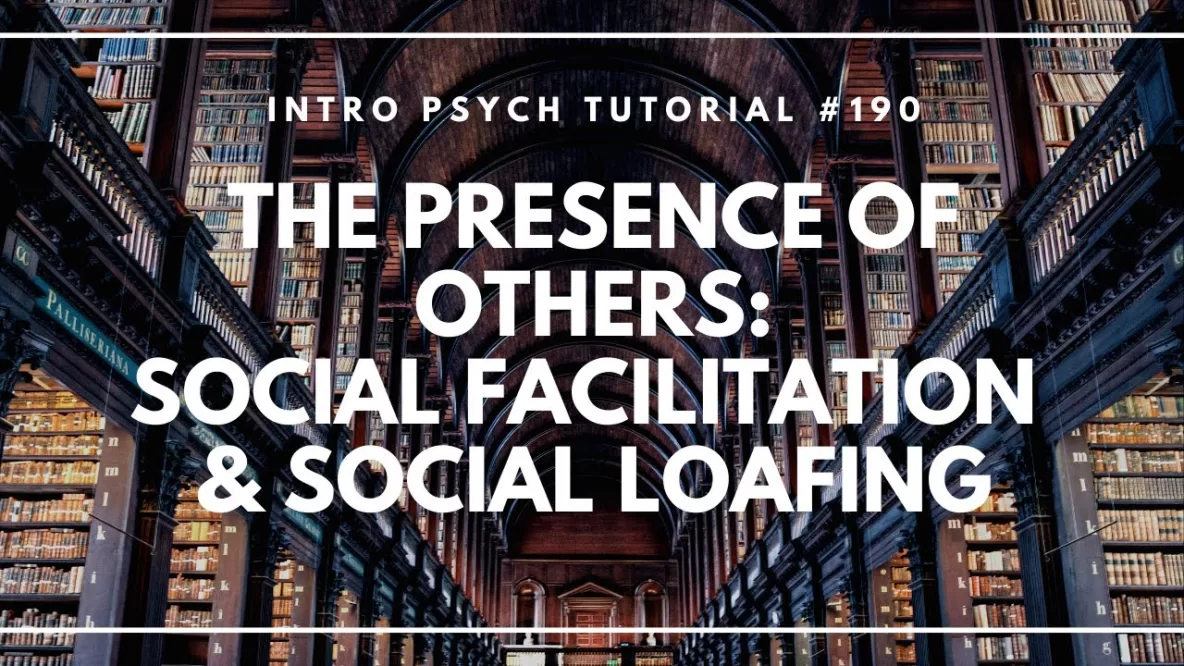In this video I discuss how the presence of others can influence performance. I begin with social facilitation, studied by Norman Triplett in 1898, which suggests that the additional arousal caused by the presence of others can improve performance on simple or well-learned tasks. I also discuss social loafing, which refers to the reduction of individual efforts when people are working in a group and when individual efforts are difficult to discern.
Don’t forget to subscribe to the channel to see future videos! Have questions or topics you’d like to see covered in a future video? Let me know by commenting or sending me an email!
Check out my full psychology guide: Master Introductory Psychology: http://amzn.to/2eTqm5s
Video Transcript
Hi, I’m Michael Corayer and this is Psych Exam Review. In this video we’re going to consider how the presence of others influences our performance. Over 120 years ago, Norman Triplett noticed that cyclists tended to be faster when they were competing with other competitors rather than when they were alone and just competing against the clock.
So to investigate this, he had children wind reels as fast as they could; and they did this either alone or in pairs. What he found was that when the children were in pairs, they tended to be faster. This is referred to as social facilitation. This is the idea that the presence of others improves individual performance. Now Triplett’s original data from 1898 doesn’t seem to hold up to modern statistical analyses, but other research has provided evidence that sometimes the presence of others can in fact improve performance.
But you probably also know that sometimes the presence of others decreases your performance; it makes you more likely to screw up, or make mistakes. You choke. So why is it that sometimes people choke with the presence of others? Well, part of the answer seems to be practice and whether we’re trying to do a simple or a complex task. So we can think of the presence of others as creating additional arousal and in the case of a simple or well-learned task, this additional arousal might increase our performance. But in the case of a complex task or one that we haven’t learned particularly well, this additional arousal might cause us to do worse.
And this should remind you of the Yerkes–Dodson law that I talked about in the video on arousal theory. And some research evidence supporting this idea comes from J. W. Michaels and colleagues in 1982; where they looked at the performance of skilled pool players versus amateurs when they were either alone or being observed by four people. What Michaels and colleagues found was that the skilled pool players actually did better when four people were watching them play rather than when they were alone. And the opposite was true for the amateurs; they did worse when people were watching them. Now this seems to apply not just to humans but to other organisms as well.
A study by Robert Zajonc, Alexander Heingartner and Edward Herman in 1969 looked at the performance of cockroaches. So what they did was they had the cockroaches do either a simple maze or a complex maze. The simple maze was just a straight line and the complex maze was a T-maze, where they had to turn either to the left or the right to get to the correct end of the maze. And what these researchers did was they created sort of a stadium for other cockroaches to observe. So through these clear dividers there could be other cockroaches around the maze or the cockroaches would be competing alone without the presence of others. What they found was that when it was a straight line maze, the cockroaches were faster in the presence of other cockroaches. But if it was a complex maze, they were slower in the presence of others and they were more likely to make errors and turn down the wrong hallway.
We can also think about the presence of others when we’re actually working with others; so when we’re working in groups and other people are contributing to the effort. This is the idea that working with others can sometimes cause individuals to reduce their effort. This is referred to as social loafing. So this was first investigated by Max Ringelmann in 1913, and the way that he did this was he had people pull on ropes and he measured people pulling alone. He found that on average they pulled with the force of about 139 pounds, but groups of eight pulling on a rope had an average force of only 546 pounds. This meant that each individual was contributing about 68 pounds of force. That’s almost half what they contributed when they were alone. And this is why this social loafing is sometimes referred to as the “Ringelmann Effect“.
This was replicated in 1974 by Alan Ingham and colleagues, where they had people pull on a rope either alone or with other participants but the other participants were actually confederates who were not actually pulling on the rope. What Ingham and colleagues found was that the individuals who thought people were helping them pull reduced their effort and they pulled with less force. So this demonstrates that sometimes being in a group working together can cause people to reduce their effort. And this is something you probably already know if you’ve ever worked on a school project where individual efforts are difficult to measure; where it’s hard for the grader to know how much each person worked on the final result. This means this creates a situation where people are likely to slack off or engage in this social loafing. I hope you found this helpful, if so, please like the video and subscribe to the channel for more. Thanks for watching!

